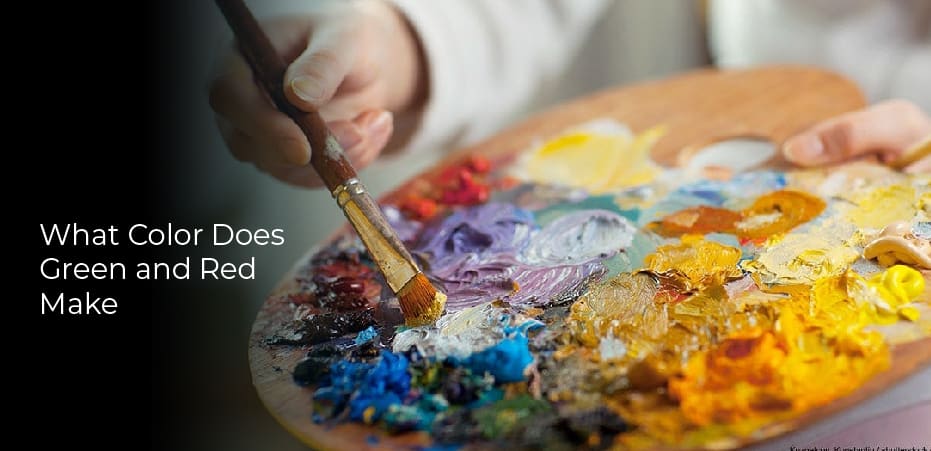You may have heard that green and red color make blue, but what does that mean? There are several things you need to know. If you want to find out, read on.
WHAT COLOR DO GREEN AND RED MAKE
The answer is olive, a secondary hue from mixing the two primary colors. With just a few easy steps, you can create an endless array of shades and tints to choose from. What color will you come up with? Try experimenting today!
Can You Mix Colors to Create Red and Green?
The answer is yes! What color does green and red make? The combination of the two colors creates a secondary color called yellow-green, more commonly known as the olive. If you mix equal parts of both colors, you will get a muted greenish-brown hue.
You can also mix in other hues, such as white to lighten the color or black to darken it. Experimenting with different amounts of each color can create a variety of shades and tints, from pale olive to deep emerald. Moreover, the possibilities are limitless! Try mixing green and red together today to see what kind of unique shade you can come up with!
1. Additive Method
An additive method for green and red is an artifact of a modern world where we use color to communicate with each other. Color is a way of expressing information, and it is used in everything from mobile phones to video game consoles.
Additive colors are produced by mixing dyes, inks, and other pigments. Moreover, they can be used in monitors, photo lights, mobile phones, and even televisions. The process is based on the Young-Helmholtz color vision theory.
The main component in the process is the ink or ink. These are mixed and filtered to produce the color you see on your screen. It’s like subtracting a layer of paper from a white sheet. Depending on the density and amount of ink, you will get a range of colors. Some are more vivid than others.
2. Subtractive Method
Subtractive color systems use multi-layered colored dyes to reconstruct the light spectrum on film. These colors are used for various applications, including print, silkscreen, and digital imaging. For case, black pigment is added further to dim the colors in a four-color printing process. A similar system, known as an additive color model, uses red, blue, and green. The latter, referred to as RGB, is used to display an image on a monitor.
One of the lesser-known systems, the additive color model, is also used in the design of a tablet or PC. Another subset, the CMYK (pronounced chee-mah-kay) model, is used to produce the world’s most durable and functional printed items. Some artists may take a more eclectic approach, utilizing cyan, magenta, and yellow as their primary colors. However, a printer will only reproduce a few hundred thousand colors, leaving it up to the creative talents of the discerning artist.
The CMYK model is the big daddy of all the color synthesis systems in the grand scheme. As such, it’s important to learn the best practices and avoid common mistakes.
3. Tertiary Method
Tertiary colors are a type of intermediate colors. They are produced when a primary color is mixed with a secondary color. In some cases, the color can also be created by combining a primary and complementary color.
Tertiary colors can be brown or gray. Mixing two or more tertiary colors creates an interesting variety of shades. The result is a range of colors with a muddy, dusty, blue-gray hue. It is important to understand how to mix tertiary colors before using them.
Start by making a swatch of each color to learn to mix tertiary colors. Make sure you have light to medium pressure when applying the paint. You will need to balance the amount of the primary (red, yellow, and blue) and the secondary (orange, green, and purple) colors, so don’t mix too much of one.
Shades Of Green That You Can Create Unique
Green can be a great color, especially if you want to add depth to your artwork. It comes in various shades, and learning to mix green can add even more depth to your artwork.
When it comes to mixing green, there are several things you need to keep in mind. First, there are two primary colors you need to use. Yellow and blue are the foundation for any shade of green. You can also add other colors, but remember that the color will be affected by what you add.
For illustration, you can create a dark forest green by adding red to a mixture of yellow and blue. Another option is to combine cadmium yellow with ultramarine blue. This produces a warm shade of green.
If you aren’t satisfied with your results, you can add red or another color to brighten the color. Red is the most effective complementary color for green.


